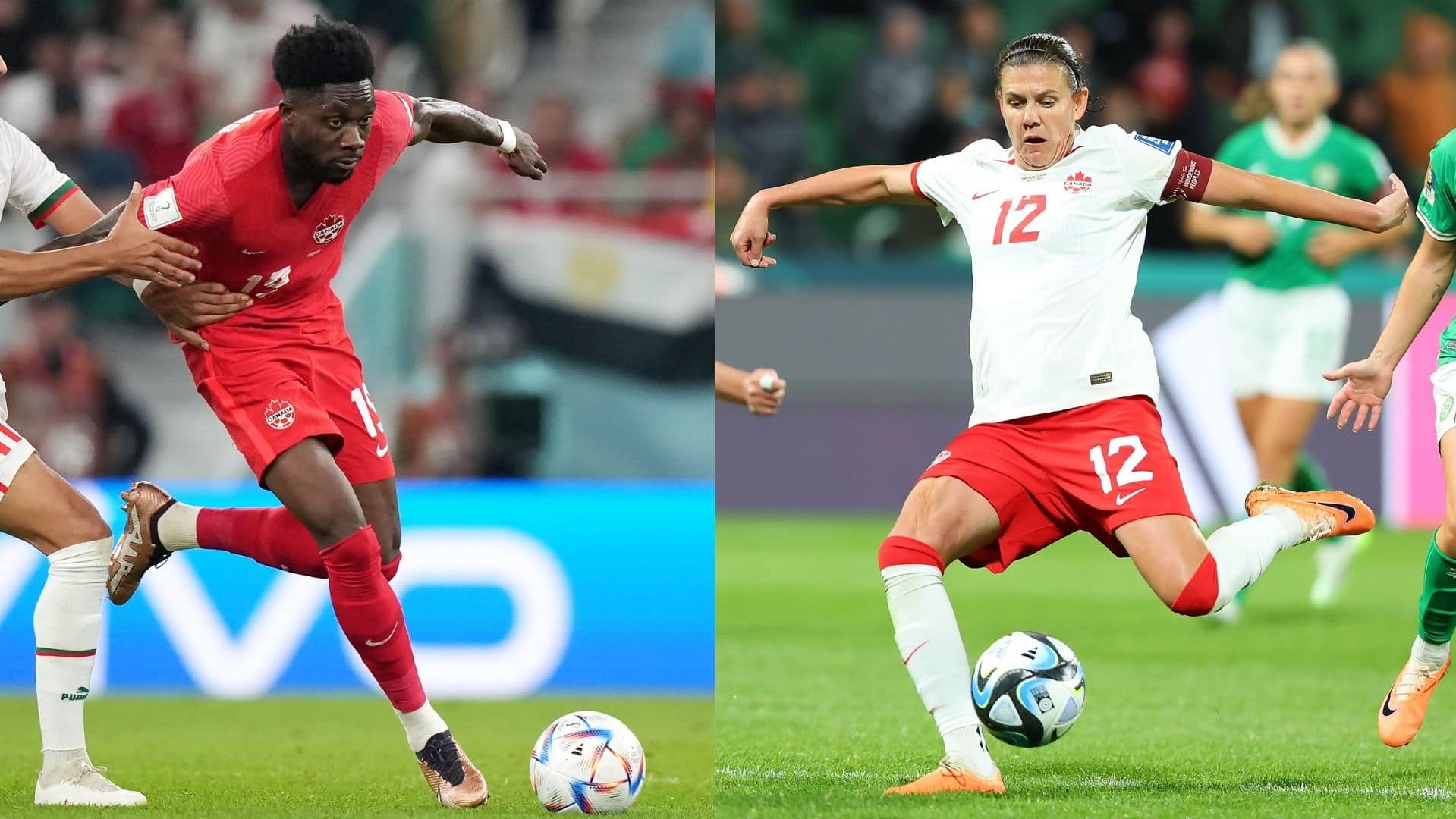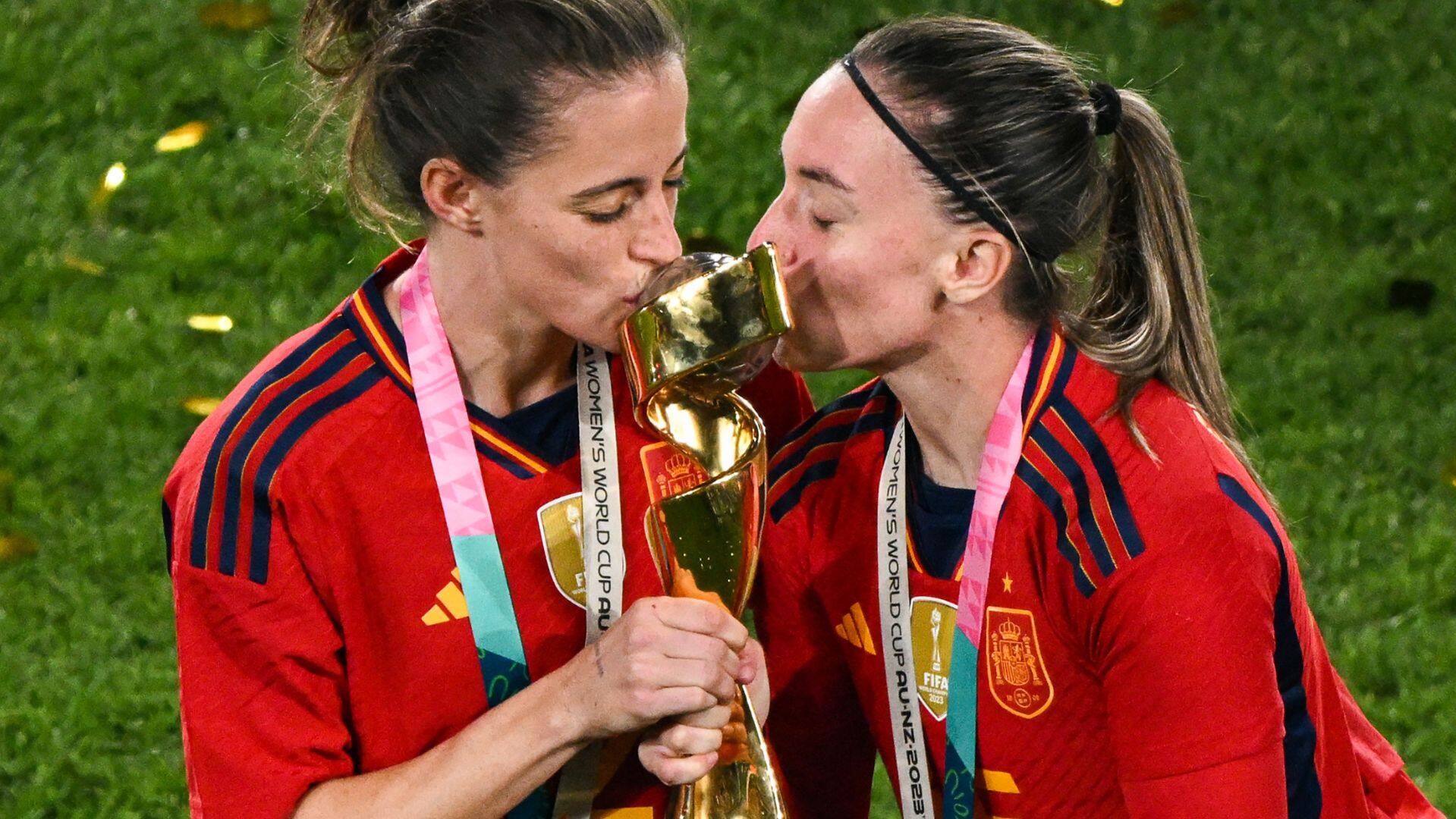From a first-time winner in Spain to growing global parity, this edition of the FIFA Women’s World Cup had it all. There were record-breaking audiences, adversity, young stars on the rise and the continued fight for equality. Here are a few takeaways from a tournament hosted so spectacularly by Australia and New Zealand.
New champion
It was a triumphant finish in what was a turbulent year for La Roja.
Olga Carmona’s first-half goal was enough for Spain to raise its first Women’s World Cup trophy in just its third appearance, now owning the distinction of being the only nation to own U-17, U-20 and senior world titles all at one time.
They are a powerhouse and are here to stay, in spite of a simmering dispute with their federation which caused 15 players to resign from national team duty a year ago, citing their mental health and demands for a more professional environment.
While some returned, such as Golden Ball winner Aitana Bonmati, others did not, including Barcelona standouts goalkeeper Sandra Panos, defender Mapi Leon and Patri Guijarro.
Even in their biggest moment of celebration, it was their federation’s president stealing headlines for inappropriate behaviour.
If the top nation in women’s football is experiencing this kind of treatment, it casts a dark cloud over the working and playing environments of other nations around the world, many of which have been documented.
WATCH | Spain wins its 1st Women’s World Cup:
Women soccer players at the FIFA World Cup will on average earn one fourth of what the men made in Qatar last year, according to numbers released by the organization. What’s behind this pay gap?
Overcoming adversity
There were other nations who overcame disputes with their federations to accomplish record results. There is inspiring story of Jamaica’s Reggae Girlz having to crowdfund their way to Australia ahead of the tournament and rely on the ongoing support of family and friends instead of their own Jamaican Football Federation.
Nigeria’s Super Falcons, who took finalists England to a penalty shootout in the quarterfinals, have allegedly not been paid by their federation since 2021. Global players’ union FIFPro is now assisting them with remuneration.
Then there were Olympic champion Canada, who succumbed in the Group of Death amid their own battle with Canada Soccer over equal pay. Canada still remains the only top 10 nation in the world currently without a domestic professional women’s league (Diana Matheson’s Project 8 is expected to launch in 2025).
Australia overcame an injury to Sam Kerr — the face of the World Cup and one of the best strikers in the world — in the group stage. The captain returned as a substitute in the Round of 16 and quarterfinals before scoring one of the best goals in the tournament in a semifinal loss to England.
No team was hit by the injury bug perhaps more than the European champion Lionesses. Starters Leah Williamson, Beth Mead and Fran Kirby all missed the tournament with knee injuries. Still, the side marched on, showcasing the depth of the program and buoyed by the impact of the Women’s Super League and the development pathway it provides for its young players. It won’t be their last World Cup final appearance.
Growing tournament, growing the game
I wrote this on X, formerly known as Twitter, after the group stage. “To all the doubters who thought expanding to 32 teams wasn’t a good idea, that women’s football didn’t have the ‘depth.’ Hope you’re eating those words.”
In terms of blowouts, there were a handful, but none in double digits.
And the eight debutant teams (Haiti, Morocco, Panama, Philippines, Portugal, Republic of Ireland, Vietnam and Zambia) more than held their own, including the Philippines first-ever World Cup win at the expense of co-host New Zealand.
As FIFA Technical Study Group lead and two-time World Cup-winning head coach Jill Ellis of the U.S. noted: “Progress is the biggest success story of this tournament so far. Emerging nations are showing they can compete at this level and the gaps with the top teams are closing.
“The investment in the women’s game is bearing results already. Players are fitter, have better technique and are tactically more astute. The games are faster, and the standard of coaching is higher.”
Established nations fell earlier than expected. Back-to-back defending champions U.S. team exited in the Round of 16 (their first time not making a semifinal at a Women’s World Cup). Two-time champions and No. 2-ranked Germany were ousted in the group stage. No. 8 Brazil and Olympic gold medallist Canada also made unceremonious exits in the opening round.
Countries made their inaugural trip into knockout stages, like Jamaica (world No. 43), South Africa (No. 54) and Morocco (No. 72).
Colombia (No. 25) made its first foray in the quarterfinals and Nigeria (No. 40) made it back to the final eight for the first time since 1999.
WATCH | Spain wins its 1st Women’s World Cup:
Spain took home its first Women’s World Cup trophy with a 1-0 win over England that came despite major off-field disputes that saw 15 players walk away from the team last year.
Record interest
Just shy of two million fans attended the tournament, up by 600,000 from the 2019 edition in France.
Yes, the tournament expanded from 64 matches from 52 four years ago, but the average attendance per match was up significantly: 30,911 from 21,756. It’s also worth noting that 10 matches had crowds of 45,000-plus.
In terms of broadcast, BBC reported 12 million peak viewers for Sunday’s final against Spain, plus an additional four million online. It’s the second most-watched BBC event this year after the coronation of King Charles in May.
According to Reuters, in Spain, 5.6 million watched the final, with a peak audience of 7.4 million viewers.
In Australia, Channel Seven reported they had 11.15 million peak viewers for the Matildas-Lionesses semifinal, the highest viewership since the metric began being recorded in 2001.
China recorded the highest TV audience for a single match at this year’s tournament with 53.9 million tuning in for their loss to England.
Numbers from a global perspective are not yet in, but are expected to surpass the 2019 record of 1.12 billion people.
Dancing, drums, enthusiasm galore
As reported by my colleague on the ground, Shireen Ahmed, the Nigerian team upon their arrival for their opening match against Canada were as joyous as could be. The Super Falcons danced their way into Melbourne’s Rectangular Stadium (and danced their way out with a key nil-nil draw after goalkeeper Chiamaka Nnadozie denied Canadian captain Christine Sinclair from the penalty spot).
And how about the sweet songs of South Africa’s Banyana Banyana?
Outside of co-hosts Matildas and Football Ferns, did any nation seem to have as much support as Colombia?
Travelling fans and ex-pats showed up for their teams, whether it was the Republic of Ireland’s fans roaring in Perth (especially when Katie McCabe scored that Olimpico against Canada) or Argentina supporters donning the white and sky blue to cheer on La Albiceleste in New Zealand.
Linda Caicedo
Was there a more captivating young player on the pitch than 18-year-old Linda Caicedo of Colombia? Her goal against Germany? Dancing around two defenders then a blast into the top right corner. Exquisite.
She became the first player to play in three different World Cups in a calendar year, including the U-17 and U-20 World Cups.
To think this promising career was hanging in the balance three years ago after a devastating diagnosis of ovarian cancer is unfathomable when you watch the magic she brings every time she touches the ball. She told reporters she hopes to be an inspiration to others facing cancer.
With a player like Caicedo as its backbone, South America has another emerging power other than Brazil.
Youth movement
Caicedo headlined a list of young stars that shared the spotlight in Australia and New Zealand.
Prime example is Spain’s super substitute Salma Paralluelo, the 19-year-old winger and former national track star who scored two of the team’s most important goals in the tournament. She had the 2-1 extra time goal against the Netherlands in the quarterfinals and the opening goal in a 2-1 victory versus Sweden in the semifinal.
Paralluelo’s play earned her the FIFA Best Young Player Award. She is now a champion at the U-17, U-20 and senior level. Expect even bigger things from the electric Barcelona player in major tournaments to come.
While we didn’t get a full picture of what England’s Lauren James can do thanks to that ill-advised stamp (and subsequent red card) to Nigeria’s Michelle Alozie’s back in the Round of 16, it’s clear she has the ability to turn a match on its head. The 21-year-old was England’s top scorer with three goals and three assists.
From Australian forward Mary Fowler and Dutch midfielder Esmee Brugts, both 20, to 19-year-old Haitian midfielder Melchie Dumornay, the football world’s future is in good hands.







More Stories
It’s ‘a labour of love’ on and off the rink as Ontario roller derby team preps for playoffs in U.S. | CBC News
FIBA Men’s 3X3 Basketball World Tour: DAY 2 – Utsunomiya
CBC Sports Late Night: 2024 Athletics Wanda Diamond League – Shanghai – Suzhou